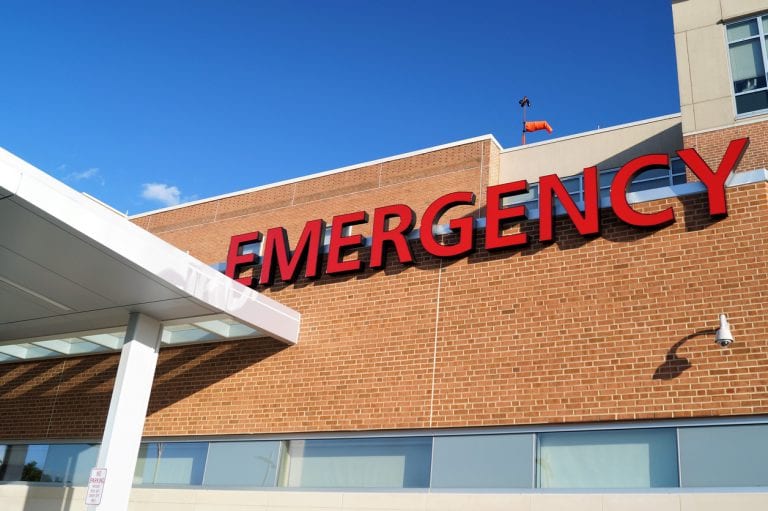When An Urgent Care Clinic is Better Than The ER
October 1, 2018

To most people, a sudden medical event means a trip to the emergency room—seems straightforward, right? But most people also know just how expensive care at the ER can be. Luckily, consumers today have a wider range of care options that can address medical needs quickly and affordably depending on the severity of need and how soon care is needed. Options include the emergency room, urgent care clinics, primary care physicians, and more. But how do you distinguish the right choice—such as when you wake up with a high fever, or when your child gets injured while playing sports?
Go to Your Primary Care Physician If…
Primary care physicians (PCPs) are useful for regular, preventative care, seasonal illnesses, as well as for conditions needing ongoing treatment or frequent monitoring. A primary care physician practices general medicine and is responsible for tracking the overall health of a patient. A PCP will see you regularly for scheduled checkups and gets to know you and your medical history over time. Primary care physicians can monitor and manage your ongoing health concerns such as nutrition, stress management, and even mental health.
Keep in mind, you may need to make an appointment with your PCP days—or sometimes weeks—in advance, so when it comes to primary care providers it’s best to have time to plan ahead. Most take a wide range of insurance plans, meaning your out of pocket costs will vary. Urgent care clinics or emergency room visits are not a substitute for ongoing care from a primary care physician. Rather, they are a convenient and timely option when your doctor is unavailable or when you require same-day treatment for a non-life-threatening injury or illness.
Go to the Urgent Care Clinic If…
Urgent care clinics can help with a broad range of healthcare needs that require same-day care but are not life-threatening. An urgent care clinic will usually offer same-day walk-in care for many of the services a PCP would provide, including treatment for more acute issues. Urgent care clinics often have longer or more flexible hours than most primary care physician practices, with some even open holidays. For added convenience, some urgent care clinics also include X-rays and a wide variety of lab tests on-site. Additionally, an urgent care clinic can often handle stitches, sprains and strains and minor burns. If you need a referral to a specialist, there is also often an option for recommended continued care and follow-up.
If using health insurance, you may have a copay when receiving care in an urgent care clinic, depending on your plan. However, even if you have to pay out of pocket (i.e. if you’re not using insurance, or if you haven’t yet met your deductible), the charges are almost always far less than what you would encounter in an emergency room setting. With that in mind, what situations might warrant an emergency room visit instead of a visit to an urgent care or primary care physician?
Go to the Emergency Room If…
Emergency room treatment should be reserved for only serious or life-threatening emergencies. These clinics are either attached to a hospital, or offer the same level of care as a hospital. Because of this, the cost of their services is far higher than the cost of same-day care at an urgent care center. However, in a life threatening emergency, there is no substitute for an emergency room visit no matter the cost.
Conditions that should be treated at an emergency room include suspected heart attacks, serious breathing problems, seizures, severe allergic reactions, broken bones, strokes, and deep or seriously bleeding cuts that require significant suturing.
The cost of services at an emergency room can be unpredictable. Many insurance policies have higher co-pays for ER visits. Additionally, even if your insurance is accepted by the emergency room, it may not be accepted by the ER healthcare providers who treat you. As a result, you might wind up on the hook for bills than can grow to thousands of dollars. If you happen to be visiting an ER for a non-life-threatening situations, consider asking your nurse or physician about the cost of the treatments they are recommending.
When seeking medical care, the top priority is getting the most appropriate care as soon as possible. Choosing the right level of care can mean a massive difference in costs. When choosing the right path for you, make sure that you balance urgency with availability and price while getting the care that you need.
